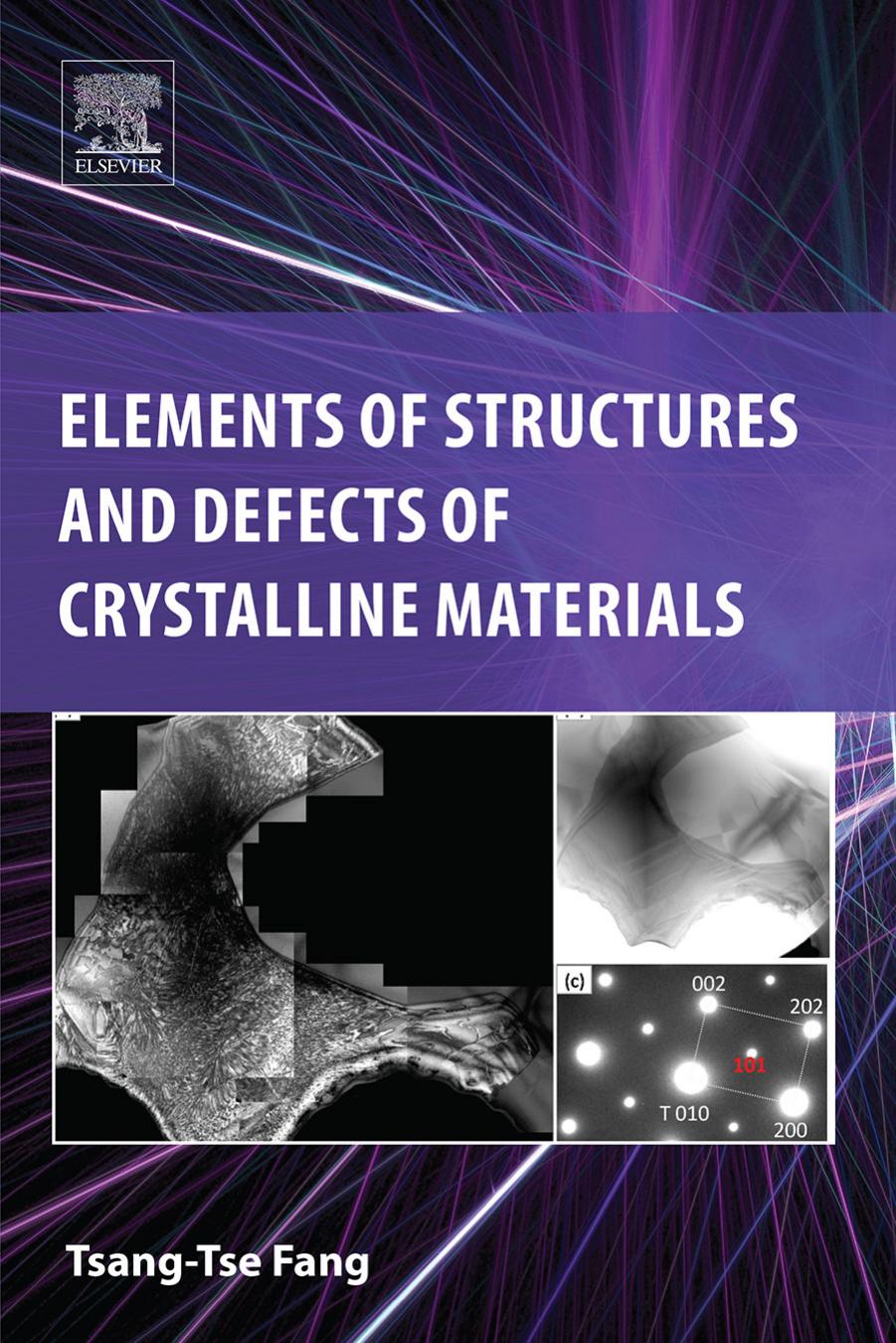Elements of Structures and Defects of Crystalline Materials by Tsang-Tse Fang

Author:Tsang-Tse Fang [Fang, Tsang-Tse]
Language: eng
Format: epub, pdf
ISBN: 9780128142691
Publisher: Elsevier Ltd.
Published: 2018-11-15T00:00:00+00:00
(4.43)
(4.44)
The excited electrons may also be ionized to the conduction band or localized at cations.
4.2.5.2.1.2 Metal-Deficient Oxides
Consider the cation vacancies as the major defects, which can be easily formed by treating the oxide in a very high oxygen atmosphere via the reaction:
(4.45)
This reaction implies that oxygen is incorporated into the normal site along with the creation of a vacant cation site, indicating that a pair of cationâanion sites is created. In addition, the neutral cation vacancy implies that it associates with two real positive charges or electron holes, which may also be excited. Regarding bonding with outer s and p electrons, in the same argument as the excited electrons, the excited holes* may be excited to the valence band to cause p-type conductors. As for bonding with outer 4f or 5f electrons, the excited holes will be associated with or localized at the cations on normal sites. Regarding d electrons, for p metal, the ionized holes would be excited to the valence band, but for a charge-transfer insulator, they would be localized. The related defect reactions may be expressed as: for holes in valence band,
Download
Elements of Structures and Defects of Crystalline Materials by Tsang-Tse Fang.pdf
This site does not store any files on its server. We only index and link to content provided by other sites. Please contact the content providers to delete copyright contents if any and email us, we'll remove relevant links or contents immediately.
| Automotive | Engineering |
| Transportation |
Whiskies Galore by Ian Buxton(41528)
Introduction to Aircraft Design (Cambridge Aerospace Series) by John P. Fielding(32888)
Small Unmanned Fixed-wing Aircraft Design by Andrew J. Keane Andras Sobester James P. Scanlan & András Sóbester & James P. Scanlan(32573)
Craft Beer for the Homebrewer by Michael Agnew(17932)
Turbulence by E. J. Noyes(7700)
The Complete Stick Figure Physics Tutorials by Allen Sarah(7137)
Kaplan MCAT General Chemistry Review by Kaplan(6595)
The Thirst by Nesbo Jo(6435)
Bad Blood by John Carreyrou(6274)
Modelling of Convective Heat and Mass Transfer in Rotating Flows by Igor V. Shevchuk(6222)
Learning SQL by Alan Beaulieu(6035)
Weapons of Math Destruction by Cathy O'Neil(5827)
Man-made Catastrophes and Risk Information Concealment by Dmitry Chernov & Didier Sornette(5645)
Digital Minimalism by Cal Newport;(5389)
Life 3.0: Being Human in the Age of Artificial Intelligence by Tegmark Max(5184)
iGen by Jean M. Twenge(5161)
Secrets of Antigravity Propulsion: Tesla, UFOs, and Classified Aerospace Technology by Ph.D. Paul A. Laviolette(4988)
Design of Trajectory Optimization Approach for Space Maneuver Vehicle Skip Entry Problems by Runqi Chai & Al Savvaris & Antonios Tsourdos & Senchun Chai(4839)
Electronic Devices & Circuits by Jacob Millman & Christos C. Halkias(4746)
